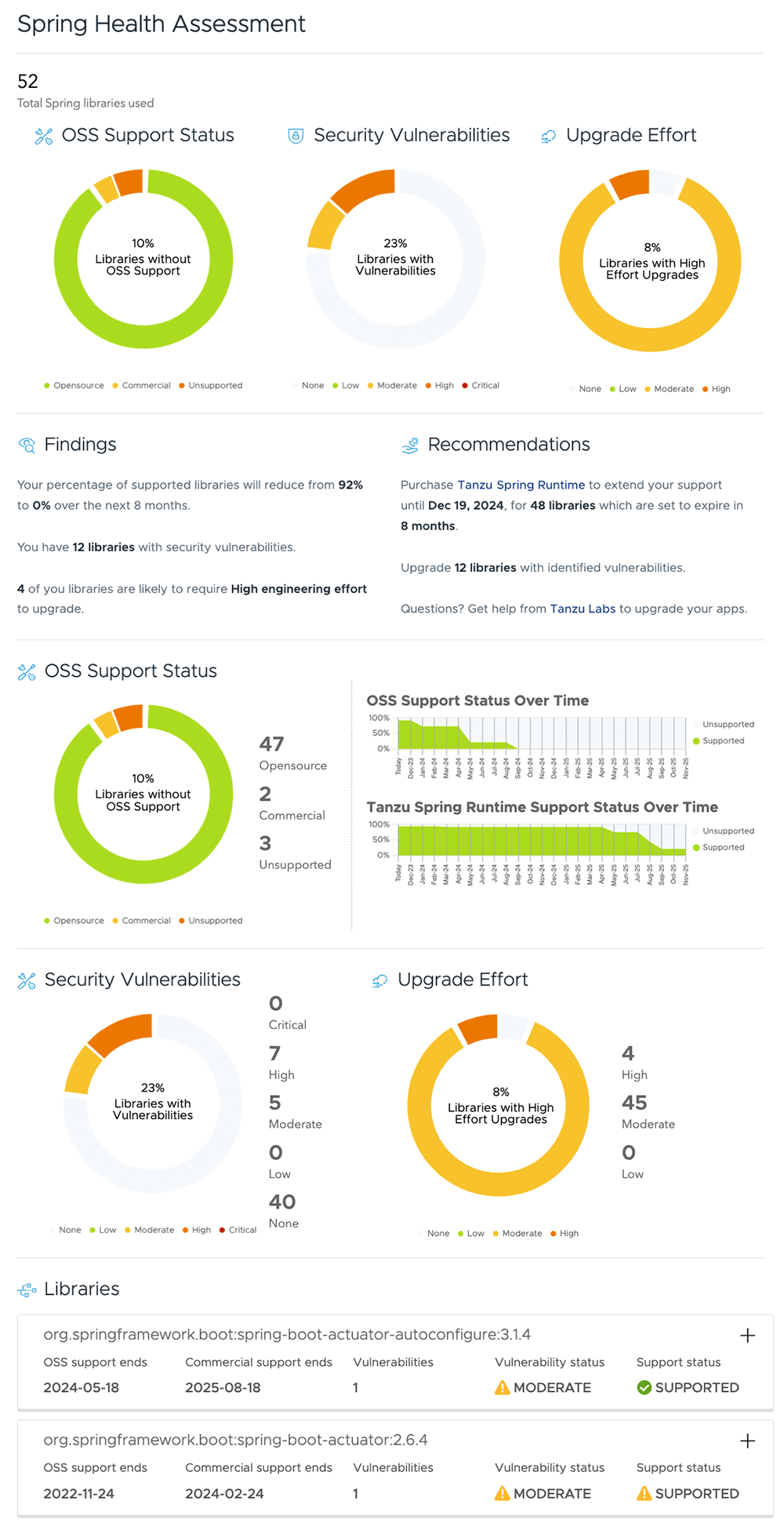Coté
What does "synergies mean"?
…
I implore you to click on the video above because I live for the views, but if you (like me!) can’t stand video, here is the transcript:
Synergies is actually a very useful precise word in the business world but it gets overused and it's not well understood.
What it means is that if you combine two or more things together, you gain a capability that they didn't have on their own.
You often hear this in terms of M&A, where two companies are going to come together, and they get new products, access to market, new innovation, that combined with each other allows them to come up with a new product.
The downside of "activating synergies" is that the easiest, quickest way to activate synergies is to fire people who are duplicative in HR, finance, even in the product delivery groups, [and, well, any group, really] you can "activate the synergies" of getting rid of people and saving that money, which is not great for actual workers.
I would say that's more sad synergies [I really shit the bed there, I should have said "sadnergies"] than good synergies.
But it sure makes [the stock market] happy!
See the other entries from The Business Bullshit Dictionary, watch them all and share them with your co-workers!
My Content
Software Defined Talk #450: Workers of the world, don’t let HR hide in darkness - This week, we discuss the role of DevRel, Remote Work and Layoffs. Plus, Matt reveals his latest keyboard recommendation. // I’ve been neglecting to post links to our episodes for many weeks. If you’ve been missing them, don’t worry, we’ve still been doing them weekly: check out the episodes.
Relative to your interests
Gartner Forecasts Worldwide IT Spending to Grow 6.8% in 2024 - IT spend for software estimated to grow 12.7% y/y from $913m to $1.02bn in 2024. // That’s the highest growth rate in each category. // It’s good to be in software.
Measuring Developer Productivity: Real-World Examples - Lots to read here if you’re into the whole developer productivity metrics thing.
Red Hat Developer Hub: An Enterprise-Ready IDP - “this new Developer Hub is designed to tackle common DevOps challenges, including complexity, lack of standardization, and cognitive overload. It features a self-service portal, standardized software templates, and plug-in management, all underpinned by enterprise role-based access control (RBAC) and robust support systems.” // I love that the reporter picked up on RBAC as a major (differentiating) feature - or that Red Hat would list it. That’s like saying “yes, but this car has tires!”
A quote from Bryan Cantrill - ’Tools are the things we build that we don’t ship—but that very much affect the artifact that we develop.’ // In favor of the DIY stack. // This line of thinking is commercial poison for most tech vendors/clouds. // But, the reaction to that poison might say more about errors in pricing more than “value.” // Also, we’re not all re-inventing enterprise hardware.
CIO ‘change fatigue’ dampens enterprise IT spend - Enterprise people will talk about AI, but not spend money on it: ’Generative AI, however, won’t have a major impact on IT spending, Lovelock said. “2024 will be the year when organizations actually invest in planning for how to use GenAI,” said Lovelock. “IT spending will be driven by more traditional forces, such as profitability, labor, and dragged down by a continued wave of change.' On the other hand, consultant surveys paint a picture of much activity. And, elsewhere: ‘Lovelock said vendors were introducing AI to solve problems – such as reducing customer churn or getting better value for marketing – that companies had been trying to solve for 25 years. “Most of the use cases that we see coming forward are, in fact, something that has already been done. We’re just saying do it better, faster and cheaper.”’
Voices in your head - I read this and I think: yes, and I have become exhausted hearing and running from voice to voice like a harried thought-waiter seeing what new orders and desires the voices have. Some are happy and delighted and leave good tips, others have sent their steak back for the third time, others would like to tell me about their grandchildren as I struggle to hold a tray of tacos and table 6 keeps eyeing me for the check. I used to be able to serve all the voices, but now it’s just a slog. Maybe this is part of what fuels the turn to cranky conservative as we get older: we just want a break. Mix that with fear of the young and new (driven by lack of understanding and fearing your support, money, and identity are being destroyed, or worse, laughed at and mocked), and you have a potent force to drag you to the dark side. Outside of that: good advice for figuring editing content.
IBM Consulting orders a return to office - and means it - This always the story. The Federal Reserve of San Francisco says: “We conclude that the shift to remote work, on its own, is unlikely to be a major factor explaining differences across sectors in productivity performance. By extension, despite the important social and cultural effects of increased telework, the shift is unlikely to be a major factor explaining changes in aggregate productivity.” And yet, management insists that things are going poorly. In the middle part of my career that I’m in, I’ve worked with “executives” almost exclusively. Most are curious and pragmatic - they “make it happen” inside whatever constraints they have, using whatever tools work, old or new. But the inability of (some) higher level management to adapt in this remote work era is so weird. They’re capable and crafty, that’s how they got the reward of toiling in the glow of the executive suite, but they just can’t wrap their heads around a new way of working. And the whole thing gets even more painful to think about when surveys like this show that management also wants to keep working from home.
Mourning Google - Here, I submit the late term success of Google: even those who loathe it can’t help but use many of the services from it because they like the services and they work. Search may be a gewgaw swamp of As Seen on TV quality shit…but people’s stated preference is using Google services every day.
Your Child’s Favorite Teacher May Soon Be a Chatbot Yeah, the idea of having a student peer simulator is pretty good for kids who are - however you want to say it - resistant/incompatible with traditional pedantry methods.
Wastebook
You know children are a lot like chocolate syrup. It’s great in almost any quantity on anything. But if you were to submerge yourself in it for too long, you’d suffocate to death.
“specific resource allocation decisions.”
“Which is basically, more often than not, my feeling on the entire generative AI movement now. None of it seems to be making anything better, just a different kind of annoying.” Here. // I would rejoin-quip: yes, and it’s making the pre-existing annoying things slightly better.
“It’s mostly pass-the-sickbag stuff.” Here.
“I’m gonna go and see Van Halen, and come back at 10. And we’ll have this conversation then.” Dear John Letters #52.
She actually asked to do this. They grow up so fast!
Logoff
Aside from the usual bucket of edits here and there, I’ve wrapped a video course I'm doing with O’Reilly. One of the editors there (“my editors”?) was really interested in my how to survive and thrive in a BigCo oeuvre, so they asked me to make a series out of them.
I thought this was, like, kind of ridiculous, but I’ve never turned down someone who gave me a specific content assignment. They came up with the suggested topics - which was what I was spacing out on - and we were off to the races. It’s eight 3 or 4 minute chunks (with an 8 or so minute one on presentations, predictably, since that’s like a huge part of my life). I could look at the timelines and schedules and shit for when it comes out, but, it’s like, sometime (I got some other work I need to get to - that landing page copy for an “invite only executive event” isn’t gonna write itself!)…and I’ll obviously annoy you with repeatedly linking to here it.
Anyhow, although this is an uncomfortable amount of polishing my own toot-horn, it came out really well. I don’t mind saying: I somehow managed impress even myself!
In the next few months (next month, maybe even?) you’ll be able to watch it in O’Reilly Safari. Chances are high your big company already pays for a seat for you!
We built a platform, but no one uses it!
This year we’ll see a lot app platform teams struggle to get developers to actually use and appreciate their platforms. I know this because this has happened to every platform team I’ve talked with over the 9 years when they’ve put Cloud Foundry in place, failed to appreciate the “Kubernetes is not for developers” paradox, and are now putting “platform engineering” platforms in place. The solution is marketing and developer advocacy, and good old fashioned trust building. These are things that IT is traditionally not good at: it’s never been their job. So, this year, it’s time to fix that!
My colleague Bryan Ross wrote up his real-world experience doing platform advocacy and marketing recently, and I got him to give me a quick overview in the video below:
If you’re in the platform, DevOps, even kubernetes rodeos, you’ll get a lot out of his article.
Wastebook
Don’t worry about where the fence is, just swing.
Daughter: “I can’t read that book yet because I’m still reading this book.” Me: “you know, you can read more than one book at once.” Daughter: “What?! No you can’t. WHO TOLD YOU THAT?!”
“A real holiday. No weird stuff.” Hilda, s3e1. (Good luck with that!)
If that’s what I need to do to get a seat at your table, then your table sucks.
“I don’t know why people lose sight of the fact that having fun is one of the very best parts of being a human.” Here.
Relative to your interests
Google lays off “hundreds” more as ad division switches to AI-powered sales - How Google is using AI to replace human’s role in sales: ‘Google has been packing Google Ads—its most important product—with tons of generative AI features lately. One is a natural-language chatbot that helps people navigate the large selection of ad products; another is a system that can just make ad assets like images and text on its own based on a budget and goals given by the ad purchaser. Google’s generative AI ad system is part of a product called “Performance Max” which works by autonomously remixing and tweaking your ads using the click-through rate as an instant feedback system. Google used to have humans do sales guidance for its products, create art assets, and decide on text and layouts, but now AI can do it a thousand times a second.’
A Theory of Grift - “the heart of a grift is that you get something that, in a technical sense, is what you paid for, but that is also not worth what you paid for it.” Who gets grifted: “grifts tend to target the middle of whatever the relevant bell curve is. There are a lot more average people than non-average people, so the market is bigger. And their averageness makes it easier to reason about their motivations.” Meanwhile, some management consulting suggestions for the health and wellness grifters out there.
HOWTO: Change your behavior - Advice in that tidy style the nerds love.
How High-Performance IT Improves Business Through Technology - I never like the way I word the concept of “business/IT alignment” when it comes to software development, that is, using your software to run, innovate, and grow your business. It always sounds so marketing-y. Similarly the word “enterprise” is a term of art that is incredible precise and helpful in my field but it feels weird and slightly eye-roll-y. And, of course, “digital transformation.” Anyhow, some good wording in this piece.
Logoff
People make fun of LinkedIn and do a lot of performative throwing-up about it. Even I do that! But, over the years it’s been very valuable to me and helped me do my job. With the shit-showing of Twitter I don’t have much access to the 11,000 people I built up over there since 2006,1 but LinkedIn has been great for that for many years, especially now.
My only worry is that most of those people are co-workers, but I’m starting to notice many more people from other organizations. There’s nothing wrong with those co-workers and I like having them in the audience as well, but I also like to get to people outside of my immediate social spheres.
And, even if it does just remain co-workers, it’s alway good to be well known in your company. Better, I’ve heard over the years that the silly videos I do are useful for education and training and, of course, to give other people stuff to post themselves.
So, LinkedIn: it’s good stuff!
Also, my 2FA got fucked, so I can’t login, and you can imagine what a black-hole of bullshit it is to get that fixed.
Touching the Flying Spaghetti Monster
Upgrade That Spring!
If you do Spring stuff in a large enterprise, you should check this thing out.
Relative to your interests
AI for Economists - Some prompt formations and stuff for the ChatGPT and friends.
Signs that it’s time to leave a company - Attempts to get people back in the office are something to watch in 2024: “I do think there’s lessons to be learned, and that the delusion that they can roll back work from home and enforce RTO without killing off innovation is a big problem that will increasingly hurt them over time.” Also: I like this kind of advice because it focuses (1) on analyzing and judging the “culture” of an organization by how it runs its business day to day, not just the vibes, (2) pointing out that high growth companies are (like celebrity diets) the weirdos, not the instructive norm that you can imitate 100%. I’m most interested in this transition from high growth to “just normal” - few people write about that in tech.
The Cloudcast: 2024 Look Ahead - Surviving the Q1 Kickoff - There’s a lot of good advice in here for surviving and thriving in a big company. Find out how the money is made, seek to spend less/do more with the same budget, support that, keep doing what worked last year, don’t get involved in bold (and thus risky) new ideas. The point of a big company (1) is stability and cash flow growth (profit), (2) good compensation and a secure job for staff. The second gets lost on all the startup frenzy: customer one of a big company are the people working there.
Applying the SPACE Framework - Developer productivity metrics through context.
Citi retires 6% of its legacy applications – and 20,000 people - I’m pretty sure those 20,000 are across the whole company, not just the people whose software was modernized as the headline sort of implies. Also, check out the chart for IT things they did, indicative of what they’re proud of and what matters to enterprise buyers.
This workplace battle is over - Axios summarizes a recent work from home survey: ‘“Maintain hybrid work” was cited as a priority by 27% of the U.S. CEOs who responded to the survey conducted in October and November. A separate survey of chief financial officers by Deloitte, conducted in November, found that 65% of CFOs expect their company to offer a hybrid arrangement this year. “Remote work appears likely to be the most persistent economic legacy of the pandemic,” Goldman Sachs economists wrote in a recent note. About 20%-25% of workers in the U.S. work from home at least part of the week, per Goldman.’
The trouble with DevRel - “When awareness and adoption are no longer issues, the role of DevRel needs to change. It becomes less about creating content than it does interacting with and growing the community, fostering goodwill, nurturing customers, and providing feedback. Sadly, this is hard to justify when budgets get reduced and headcount is flat. DevRel then becomes an easy target for elimination.”
ING says supermarket revenue will drop sharply due to ban on tobacco sales - On July 1st, you can’t sell cigarettes, etc. in Netherlands grocery stores. So, ING predicts prices for everything else will go up to make up for lost revenue: “When excluding tobacco sales, the sales in supermarkets are on the rise, according to ING. The prices on the shelves appear to be headed for another one percent increase, after a sharp rise in prices during previous years.” It seems like something is wrong with capitalism if that happens.

Wastebook
“it’s unhelpful to say ‘let me know if I can do anything to help,’ because when you are going through a stressful life change, the last thing you need is for someone to demand that you make another decision.” Here.
“Instagramming videos of the donkey he lets roam around his kitchen. It seems like a good life.” Here.
I’m trying to use Google Docs as my note taking tool for work. It’s hard to get over the feeling that I’m using Word to take notes when I should be all tech-hipster and use markdown files instead. Also, if it’s an official corporate tool, you comply with all the corporate data security governance, you can share with employees, and (depending on what the admins have done?), you can use the Google AI stuff (well, I haven’t actually tested this, work has it turned off).
“Efficiency 2: Cost Savings Boogaloo.” Here.
Conferences, Events, etc.
Talks I’m giving, places I’ll be, and other plans.
cfgmgmtcamp, Feburary 5th to 7th, “We Fear Change” talk; DevOpsDays LA, March 15th, “We Fear Change” talk; Platform Engineering Day at KubeCon EU, tentative, March 19th. I’ve got a couple of CFPs out there: Devoxx UK and DevOpsDays London.
Logoff
I’ve been a lot more focused on making videos for YouTube since COVID, like many people. I’m tired of all those thumbnails of people looking shocked or upset. I make a lot of them too! They certainly don’t help me reach a lot of views. How about I stop making them?
Tamale House
Not much today, just cleaning up the queue.
Wastebook
“Look, it’s a Cybertruck!” - yelled out by a Bay Area co-worker I was talking with on the phone as they drove into work.
“In one way this is ‘just’ the evolution of the comment section.” Here.
If you’re saying something you believe to be true, you don’t need to tell people you “honestly think it’s true” or that you “actually think” it’s the case. That’s just, like, assumed when you’re talking. When you say those things, true or not, you’re running the risks of (1) pointing out that when you don’t use those phrases in other statements, you’re not being honest, and, (2) point out that your claims are unbelievable and likely risky-to-bonkers.
“There are no large language models in vacuum cleaners.” Ben Thompson on CES 2024.
“She’s like you, but lacks a sense of humor.” Ahsoka, s1e7
Relative to your interests
How to become a platform engineer - Also a good list of the Google Cloud products you’d use to do “platform engineering.”
What I Learned Selling a Used Pencil on TikTok Shop - “Within two minutes, I had hundreds of viewers. I asked them how they ended up there but nobody answered. I put on a face filter. I played carnival music. I showed them my dog. One informed me that the same pencil was much cheaper at the Dollar Tree. Another asked me if I had diabetes and then promptly left — much to think about.”
Gartner Says 50% of Critical Enterprise Applications Will Reside Outside of Centralized Public Cloud Locations Through 2027 - “’Through 2027, 50% of critical enterprise applications will reside outside of centralized public cloud locations… 'Enterprises are beginning to seek placement for workloads that have not migrated to the public cloud,” said Dennis Smith, Distinguished VP Analyst at Gartner. ‘This represents approximately 70% of all workloads.’” I think that means they’re estimating that 30% of enterprise workloads (apps) are in public cloud.
Invisible Ink: At the CIA’s Creative Writing Group - “When an organization has, say, financed the overthrow of the government of Guatemala, you would think there might be a speaking fee.” If you’ve ever been asked to create something for free, or had a big organizations cheap out on you, that is so wickedly funny! My newer theory on this is that organization would actually be fine paying you, it’s that the individual asking for the work doesn’t want to go through the dumb-pain of working with procurement to get the money. Their toil avoidance is understandable.
Out and about
Conferences, talks, events, etc. that I’ll be at.
I’m speaking at cfgmgmtcamp on February 5th, and then DevOpsDays LA on March 15th. I’m hoping my talk get accepted for the platform engineering day at KubeCon EU, but we’ll see if I manage to escape the “wait list.” If not, does that mean I can speak at Cloud Native Rejekts? I’ve got CPFs out to Devoxx UK and DevOpsDays London - we’ll see what happens. So far, no webinars or online conferences planned.
Do you have any conference recommendations?
Logoff
Another week in the bag! Sadly, it won’t be possible to go get 85¢ tacos tomorrow morning.
Backstage, Java, and remote work - three more things to watch in 2024
Here are the other three things I’m going to watch in 2024. By “watch,” I suppose I mean “I really hope something interesting and definitive happens here instead of just a continuation of what was going on in 2023.” I put the first one (our old k-friend) in yesterday’s episode.
Backstage - in 2022 and 2023 Backstage became super popular, at least in interest. I don’t know how widely it’s used now. It solves a legitimate problem (a framework and community for building a DevOps-oriented intranet for app developers - an internal developer portal to use the clunky word for the category of tools). How widely will get used? Is it easy to use and does it deliver the benefits, or just result in the same old thing? “Platform engineering” and Backstage have a symbiotic relationship now - though, ironically the progenitor of platforms engineering a concept/category isn’t exactly a Backstage company, I think.
Java migrations and changes - Oracle has changed licensing terms for their Java VM, there are older versions of the Spring Framework rolling out of community support, and large enterprises are forever in the process of migrating and modernizing their apps. There’s a lot of motivation to change around your Java stack, and when it comes to price, things actually happen a lot more than when the motivation is more abstract ideas like “digital transformation.”
Remote Work - tech people are in limited supply for the demand from every organization to use software as its primary way of running the business. This is always a problem. Over COVID and the last few years, many of these workers have come to cherish working from home - and if the share prices of companies is any indication, working remotely, well, works. However, many executives seem allergic to the concept. I think you can make cases for both positions: it just depends on how you engineer the company to run. As long time pro remote work executives like Matt Mullenweg (of Autommatic/WordPress) have said, you can build a system of work where remote work is great. And many of us saw this happen during COVID. As executives try to bring people back to the office, workers have a bunch of bluster that they’ll rebel and quit - and some other companies may be happy to hire them and have them work remotely. But will people go back to the office? Will executives relent? It’ll be interesting to see what happens. I wrote a little bit more about this in yesterday’s links.
Relative to your interests
Dutch online grocer Picnic raises $388 mln from investors, Gates Foundation - Back at cfgmgmtcamp 2023 in line waiting for some Belgian cafeteria food, I talked with some Dutch people, and we were working up an analogy to these little trucks to DIY infrastructure stacks. I didn’t verify this, but they said these little trucks are custom made (at the very least, highly customized). This made sense for Picnic’s business model: they’re all about innovating how food is delivered and the grocery delivery business. These cars can fit down narrow Europe alleys, are meant for close city delivery, etc. In contrast, already established, brick-and-mortar grocery stories like Albert Heijn and Jumbo just use stock delivery trucks. I think UPS customized trucks at some point too. I’m guessing airlines don’t get custom planes built, but might have some slight variation on the interior (the “front end”).
CIO interview - author of The Wolf in CIO’s Clothing - It’s been a long time since I read this book, but it’s good. It’s one of the few management books that focuses on the pragmatic, normal state of things instead of importing you to switch to a utopia culture…that is often unattainable and a distraction from just figuring out how to deal with unrealistic, cruel, and often uninformed requests from The Business. “[The work is made up of] responses to the toxic cultures that exist in many firms. CIOs are often asked to cope with budget cuts yet deliver more, and the organization will not tolerate failures. She says: ’It is a manipulative technique, but if they defend themselves, they are accused of being aggressive. I genuinely believe that we have to be able to defend ourselves. ’”
Marines using cheap commercial tech to hide command posts in plain sight - Nextgov/FCW - Some reverse-flow variation of “the street finds its own uses.” The other implication is that the security of consumer grade networking and IT is probably good enough, at least balancing the trade offs and benefits of secrecy and blending in.
Book Recommendations from the AWS Enterprise Strategy Team - Some books for IT/business stuff (you know, “digital transformation”).
The New News Business - “everything that happens in a marketplace falls into just three categories: transaction, conversation, and relationship. In our First World business culture, transaction matters most, conversation less, and relationship least.”
Developer Productivity in 2024: New Metrics, More GenAI - A round-up of all the developer productivity stuff from last year. It makes me think: what if developers are actually as productive as they can be? Put another way: how productive should developers be? Does anyone even know?
How to Choose Developer Events - Good advice.
Wastebook
“spatial computing apps.” Here.
“Letterman is hurting inside and the way he is dealing with it is putting on a Velcro suit and throwing himself off a three-story building.” RoTL, Jan, 2024
Oftentimes in the corporate world, success is rated by “sure, we didn’t win, but imagine how bad it’d be if we hadn’t even tried” rather than rated by “did we win?” Related: the best way to make money is to avoid losing it.
“We’re gonna have to pull this from the Dorito budget.”
Last night I dreamt that the Netherlands consulting firm ITQ invited me to their conference as an an analyst without knowing I wasn’t one. When one of them remembered that I worked at a vendor, they told me about a support ticket they had open with AppDynamics. They were cheery as always.
Logoff
We’re recording Software Defined Talk today/tonight (Jan 10th, 2024). Check out our YouTube channel to see the unedited recording, always with a few streamer-only treats.
Does kuberbetes make application development and delivery better? - 2024 Watch List
I don’t like annual predictions. Thankfully, no one’s asked me to do a big post about them this year, but usually I’m asked to do something formal. I always end up just predicting the same thing - predictions turn a lot more into hopes and dreams. I do like flagging things to pay attention to, and especially in a sort of “will this finally happen, or will we start re-calibrating our expectations from the apex of inflated expectations.”1
I’ve got three things to watch in 2024, here’s the first one (predictable for many of you, dear readers, no doubt).
Does kuberbetes make application development and delivery better?
For years we've read that kuberbetes is powerful but complex. We've also heard that application developers are not actually supposed to use it directly, let alone build all the app platforms and tools they need to make kuberbetes easy to use.
So, who is kuberbetes for, and are those people getting value out of it versus just using a standard VMs or more exotic things like serverless?
Survey results have been sort of good, people get some benefits. If you look at estimates for how many apps run in containers to get a sense for how much kuberbetes usage there is, you see something like 15% to 20% globally. If kuberbetes is going to be universal, it needs to expand to 50%, maybe even 70% of workloads.
Is that what the community wants for it, or is kuberbetes meant to be further down in the stack than something that application developers ever touch?
I try to follow the original intention of the Kubernetes Krew, which is, developers were never really meant to be exposed to it:
Well, I don't know how many of you have built Kubernetes-based apps. But one of the key pieces of feedback that we get is that it's powerful. But it can be a little inscrutable for folks who haven't grown up with a distributed systems background. The initial experience, that 'wall of yaml,' as we like to say, when you configure your first application can be a little bit daunting. And, I'm sorry about that. We never really intended folks to interact directly with that subsystem. It's more or less developed a life of its own over time. Craig McLuckie, SpringOne 2021.
If that’s true, when it comes to application the developers, I think the most valuable thing the CNCF (as an aggregate of the kubernetes kommunity) can do is define the application architectures, patterns, and practices application developers and architects need to use to be successful with kubernetes. And, you know, that might be done enough, in which case it’s just the endless slog of developer relations and thought-leadership to teach everyone and keep it rolling and updated.2
I haven’t programmed in a long time, so my historic examples are old, but the one I always think of are all those J2EE patterns and books. There was an underlying, infrastructure layer for Java (trying to re-write the CORBA death-star to get a better distributed application model), but if an application developer just made up their own way to use that underlying infrastructure, it all tended towards unique variation. Once every application follows its own design and practices, you have to spend a lot of time learning how to manage each one, and you typically lose any organization-wide benefits you were hoping to achieve: hopefully I don’t need to make the case for standardization?
Similarly, if we don’t start getting application developers (and architects) to use standardized design and patterns for their apps that are running on Kubernetes, we’ll get a bunch of unique garbage, er, sorry, variation. I feel like this happened with OpenStack: the conversation never evolved a new branch from operations into application development.
Good luck to the kommunity in 2024!
Got Java Apps? Stay on-top of security patches, upgrades, and out of support apps
We have a new tool at Tanzu,3 the Spring Health Assessment. You can use it for one project for free by uploading your dependency info from maven. It’ll create a report for telling you the, well, health of your app (see report example below). At a larger scale, we’ll work with you to do this at enterprise scale, you know, across hundreds and thousands of apps.
There’s all the usual stuff of wanting to keep your Spring apps secure and updated, but also you can figure out when your older version of Spring (and other Java components, I think) are no longer supported by the community or otherwise.
I think there’s a lot of use for this tool ahead because (1) recent changes in JVM licensing costs, (2) Spring Framework components rolling out of community support, ands, if I remember and understand correctly, (3) there’s going to be more frequent releases of the JVM from now on. And, of course, there’s the never ending slog of modernizing applications.
There’s thousands and thousands - and even more thousands! - of Spring apps out there in the world and keeping on-top of all of them is a chore. Check out our tool to start automating all that.
For even more, my team-mate DaShaun has a demo and discussion of the Spring Health Assessment, fresh from the streams.
Anyhow, look, if you’re using Spring, you should check it out. And if you want to apply it at a larger scale, you should email me, ‘cause the team is interested in how it goes for you.
Relative to your interests
Austin Tech Scene - Tracking events in Austin.
Coding at Google – text/plain - File under “probably should read this.”
The Best Return-to-Office Policies Aren’t One-Size-Fits-All - Good summary of the return to office thing. Basically, workers hate it and say it’s a waste of their time, but management is freaked out that workers are slacking off. “Oftentimes, it’s more of a preference for leaders in organizations. And when they don’t have visibility into employees’ work lives, those concerns certainly come about. And again, our research doesn’t suggest that there’s a fire burning and we’ve got to bring folks back into the office. But it certainly has been the way that many organizations have responded to some of these concerns about productivity and collaboration in some of those areas.” What you have here is a classic anti-pattern of work: the people who are not doing the work are determining how their work is done. There’s a principle from lean that says the people closest to the work should define how the work is done - they are experts in it, after all, and will spot ways to improve it day to day. That applies here as well. What management needs to do is establish the strategy, context, and principles, even metrics, that those employees follow (I don’t know, insert all that military, small teams Make Your Bed Everyday productivity cult stuff from the 2010’s), and then let the workers define how they work. This is about more than morale, it’s about productivity. Anyhow: like any worker, management needs something to do, and the easiest thing to do is to inspect workers. It’s at lost harder to build a system where workers are autonomous, but a lot better than just being in a bunch of meetings no one wants to be in and that everyone except the boss thinks - knows - is a waste of time for them. Speaking of metrics: I’ve yet to see any ongoing metric-driven model that tracks any of this in office; remote work stuff. That’d very something helpful! Even more damning, in that interview, you can see in the research that management has to come up with - invent - reasons to make being in the office worth it to employees. Applying that lean principle (the people who do the work define and optimize how the work is done): if the workers think that being in the office is the best way to do the work, they should go into the office. Otherwise, you have to budget for starting up hot-dog roasts every Thursday, or whatever, to make being in the office worth it.
A Simple Hack to Help You Communicate More Effectively - “Break down your message into three parts: What? So what? Now what?” - I like to do these in reverse order to get people’s attention, but I’m also impatient.
Silicon Valley runs on Futurity - Story (or “vibes”) drives a huge part of tech company valuation.
Rebuilding Trust and Breaking Free From Trust Proxies and The Swirl - “1. People underestimate how powerful it can be to take responsibility for past behaviors. In many cases, that is all people wanted to hear. They wanted to hear that leaders could accept responsibility for being part of the swirl. 2. Don’t underestimate the ritualistic shedding of past wrongs. Many cultures use rituals to shed bad mojo. In this case, it could be a meeting to air the dirty laundry, put it in a box, and burn the box.”
100 tiny changes to transform your life: from the one-minute rule to pyjama yoga - “’By asking: “If it’s irrational, why do it?” I stop doing it’” - this is the problem, though: how do you get yourself to actually do the rational act of following the rational? Perhaps it’s something like: you have to trust that things will be better. If you still end up unsatisfied and struggling after doing the rational, what was the point? Instead you can live in the moment and have a better chance of some seconds of happiness and relief.
Paying Netflix $0.53/h, etc. - This is a fun way to look at streaming service pricing.
Tetragrammaton - Rick Rubin interviews Marc Andreessen - This is an example of where a 3+ hour podcast works well, and is better than a 30 minute one. Normally, you just get tiny context-free chunks of Marc Anderson, and he comes off as a rich guy sort of floating above human moral concerns and everyday life. He doesn’t exactly get grounded in this interview - he’s ardently techno-positive and defensive about hating the tech industry. But, you at least get to understand his thinking so much more than you would in a WSJ column, or even a standard 30 to 40 minute podcast interview.
How bad are search results? Let’s compare Google, Bing, Marginalia, Kagi, Mwmbl, and ChatGPT - Testing out search across search engine and AIs. Not good!
I have a backlog of more links to share. Rather than overwhelm you, dear reader, I shall take the risk of saving some for next time, more aged as they may become. Do you like a long list, or a shorter one?
Wastebook
“‘Failures’ are usually just incremental steps.” Here.
Related: I’m too busy being upset at myself fucking up yet again to care about you fucking up yet again.
The Dutch like to use cake as a pie-filling.
“[A] Minotaur’s labyrinth costs nothing to enter. What we need is string to find our way out again.” Here.
“Yeah, we know how magnets work. But they’re still incredible.” Here.
“Fecosystem.” Here.
“The problem is, everyone we know really only has stones.” RoTL #521.
“Do you believe that? I’m not asking if you can argue it, I’m asking if you believe it.” Here.
“Since having kids, deadlines are a mere illusion, shadows of their former selves.” Here.
“Temporal illegibility.” Here.
It was only dark when it was night.
For me, the long winter vacation is about relaxing, “recharging.” But the real trick is figure out how to continue that chilled out mindset once back in the fray of life. I rarely can.
“We’d be showing them a pipeline of pipelines…redacting things that we don’t want to expose.”
Logoff
I have a new theory for these little videos. The views on them are so uneven - that one above has over 1,000 views, while others have, like, 79. I think what you’re supposed to do is (1) only post one a week or so, and, (2) re-post the ones that get low-views, maybe even varying the videos a little? Seems like a lot of work, but not really if you have a good workflow and a tool like Descript.
Also, we should get lunch - hahahah…jokes.
(Also: Kenji is so inspirational as a video maker. His content, of course, is great, though it has nothing to do with my content [except the chip tasting and Nutella nonsense, sort of]. What’s inspiring is that, well, if you make videos, you can imagine his workflow. I’m sure each video takes a long time, but you can totally see how he’s optimized a one-man [I’m guessing] workflow from content planning, filming, editing, post-production and posting. You can tell he has a “stop planning and just get out the camera and start filming” attitude that you have to have for this kind of work. It’s also a good example of how much “pro-am” equipment [I think Go Pro’s and iPhones] make it possible for individuals to do good, important, etc. content. In all the nonsense about TikTok destroying the world, or whatever us old people worry about, it’s easy to overlook how this equipment, contemporary computers with video editing and rendering horse-power, mics [you can see him using a Rode Wireless Go here, one of the best], and video production have “democratized” video production. There may worrying about other types of content [text, music, etc.] being shittified by the Internet, but as a consumer, video is so much better than when there were just three channels, the PBS and the UHF channel. Also, I rewatched my goofy how to eat videos recently - I mean, first, they’re great! And, second, it’s adorable to see my kids grow up over the course of three years. Also, gravy is always a winner.)
One of the key things people miss (or mis-use?) from [the hype cycle](https://en.wikipedia.org/wiki/Gartner_hype_cycle) is the fall from the peak of inflated expectations. People feel let down when a technology fails to live up to its promise, they think less of the technology. The point of that fall doesn't have anything to do with the goodness of that technology, it's all about the failure of humans to know understand the technology and the failure of boosters to moderate claims about the technology. When a technology slides down to the trough of disillusionment, it means that people's perceptions are more _correctly_ set. People being people (overreacting), the slide goes down too much, and it eventually re-sets, just a little bit up, hence, the Plateau of Productivity. Wow! Maybe there's something to be typed up here with mis-uses of the hype-cycle. The other dangerous use is to think t[he diffusion of innovation curve](https://en.wikipedia.org/wiki/Diffusion_of_innovations) is highly related - can be overlayed even - on the hype-cycle. And then you throw in [all the Disruption lore](https://en.wikipedia.org/wiki/The_Innovator%27s_Dilemma), and you're off the races of chaos-strategy (applying the lessons of steel mill business strategy to software, it turns out, is dangerous).
One of the principles of this newsletter is that I don’t have time to write the perfect thing. I bet there is such work going on - maybe it just needs to be spread more widely. I don’t know, get Martin Fowler to curate a series of blog posts that turn into a book, or something ¯\_(ツ)_/¯.
After the Broadcom acquisition, my organization is now called "Tanzu by Broadcom," or, just "Tanzu." This is how most people would refer to it anyway, but it's noticeable sign throwing that it's no longer "VMware Tanzu." We're, you know, our own thing now, within the conglomerate of Broadcom.
American Christmas, part 3
American Christmas, part 3
Kids out and about in their pajamas.
“Help me remember that our full size mini-van is hidden behind this Suburban.”
Adults out and about in their pajamas.
“Here’s the check. No rush, though!”
Massive, high capacity washing machines that would fit a calf.
The cheap wine is still expensive.
Free electricity in AirBnBs.
15 types of cauliflower frozen pizza.
“Please be respectful of our neighbors and the residents living above us. Please keep noise down after dark.”
Golf-cart security guard.
Relative to your interests
Get your work recognized: write a brag document - Making sure you prove your value at work.
Tech stuff for Ten-yr-olds - by Camille Hartsell - As it says.
Sulking is a fascinating form of indirect communication - “Given that sulking is a somewhat understandable strategy through which powerless people can get their needs met, it’s puzzling that we are so opposed to it.”
The science of decision-making: why smart people do dumb things - Drivers of decision making, a simple framework.
Make Yourself Immune to Secondhand Stress - “five positive psychology habits that help inoculate your brain against the negative mindsets of others: 1)writing a 2-minute email praising someone you know; 2) writing down three things for which you’re grateful; 3) journaling about a positive experience for two minutes; 4) doing cardio exercise for 30 minutes; or 5) meditating for just two minutes.”
2023 in Review: Reading and Writing Highlights - “I had a great year.” Seroter’s list of books, publications, etc.
Kellblog Predictions for 2024 - “ABM is a lot of work. You shouldn’t bother trying it to win a $10K or even a $50K deal. But when you can do $100K to $500K+ deals and have a few strong references in a vertical to which your company has strategically committed, that is when you should do ABM.”
Wastebook
The best is when you visit an old friend and your phone still has the WiFi password.
"freelancers’ liedowns. Here.
“I’ve eaten the burrito that tastes only of Wednesdays, all of your Wednesdays, all your loves that didn’t end because they didn’t begin, all your small midweek deaths.” Here.
“It’s just bald men. They’re going to be dead soon anyway.”
“This is a bad time to get mixed up in the uncanny, not that there’s ever a good time.” Here.
“We told you about the Japanese bathroom story, right?”
“Seasonal jute.”
“I said I’m gonna die with my boots on.”
“I retired two months ago, and I feel like a teenager!”
The Haunting of Hill House is a story about siblings. It’s the part of the story that I’m most fascinated by. I hope my kids have that kind of ongoing relationship.
Was it Arley who changed Nine Inch Nails “Terrible Lies” into “Terrible Fries,” or was that Weird Al?
“Look, people know that coffee makes you poop.” bdg.
“It’s me, Andrew Jackson!”
Logoff
We’re going back to Amsterdam today. A holiday trip is never long enough: always book the extra days, with maybe just a day or two buffer to get situated back for real life.
American Christmas, part 2
American Christmas, part 2
Stores that are open on Sunday, and don’t close until 9pm.
People saying “sorry” for no reason.
Bagels.
Top sheets.
Ceiling fans.
HVAC.
Warmth from the sun.
Massive amounts of water in toilets.
Bottle caps that come all the way off.
Colby jack.
Cheddar.
Ritz crackers.
Crushed ice from your home refrigerator.
Oceans of lotions: ten versions of every product (sometime more than ten).
45mph.
Self-service checkout machines that insist in weighing every grocery.
Using physical credit cards.
“Everyone is so fuckin' happy.”
Giant, fluffy cupcakes for breakfast. (Called “muffins” by the locals.)
Limestone facade.
A box of 12 croissants, each as big as Drax the Destroyer’s two fists side-by-side.
Free toilets at gas stations.
Free toilets at grocery stores.
Free toilets at…everywhere.
More things in part one.
Relevant to your interests
Not even God can save DXC! - “Stabilizing delivery on infrastructure doesn’t mean people will buy transformation. Just look at the similar price-to-sales ratio to Kyndryl, another firm struggling to sell transformational services tied to its commodity infrastructure business.”
Artmaker Blog - Bruce Sterling starting up his Wired-style blogging again? I hope so! For example: “He deliberately keeps it as a swamp so that he won’t become mentally trapped in the habits of the bourgeoisie.”
What comes after open source? Bruce Perens is working on it - ‘“First of all, our licenses aren’t working anymore,” he said. “We’ve had enough time that businesses have found all of the loopholes and thus we need to do something new. The GPL is not acting the way the GPL should have done when one-third of all paid-for Linux systems are sold with a GPL circumvention. That’s RHEL.” RHEL stands for Red Hat Enterprise Linux, which in June, under IBM’s ownership, stopped making its source code available as required under the GPL.’ And: ‘Another straw burdening the Open Source camel, Perens writes, “is that Open Source has completely failed to serve the common person. For the most part, if they use us at all they do so through a proprietary software company’s systems, like Apple iOS or Google Android, both of which use Open Source for infrastructure but the apps are mostly proprietary. The common person doesn’t know about Open Source, they don’t know about the freedoms we promote which are increasingly in their interest. Indeed, Open Source is used today to surveil and even oppress them.”’
Software AG webMethods: The Farewell Sale - “Yesterday, I was surprised to learn that IBM is acquiring webMethods from Software AG.”
Wastebook
“It’s good, but it’s fruit cake.”
‘I normally avoid camou clothing – (“It’s our version of plaid” – Wm Gibson)’ Here.
Frank Sinatra singing “Jingle Bells” is almost better than the theme song for Halloween, but only on Christmas Day.
On the Internet, you should always favor self-publishing and owning the published material. Each item may make zero money, but you’ll accrue the value and build the channel over years. Also, it’s often much faster, and publishers fall prey to perfect being the enemy of done.
“Essentially, where you could see the welds and joins before, you could now see the chop marks and bolts.” Here.
“This reminds me of my colonoscopy.”
"Probably, maybe. But, not on purpose
Logoff
Still in Texas, now with the kids at “Nana Camp,” that is, staying with my mother.
What is "waste" in software development, and whatever happened to slack? (No, not THAT slack, the other one)
We throw around the term “waste” a lot in software. It’s been around since the 2000s, at least since the Poppendieck’s book Lean Software Development. DevOps really took it and ran with it, it was renamed “toil” in SRE, and now the concept is pretty solidly part of how we think of software. I talked with Steve Pereira on what “waste” means exactly. We talked about value stream maps as well, another concept that’s so common that we don’t define it much anymore. He also brought the concept of slack, which I haven’t thought of in a long time. Check out the discussion!
Logoff
There’s not much going on since it’s holiday times.
American Christmas
Only In American
Still warm tortillas.
Adults wearing joke t-shirts.
Yoga pants.
Free packets of ketchup, mustard, and mayonnaise.
Ice with every drink.
75 mph.
Little plastic shopping bags.
No GDPR pop-ups.
20% tips before checkout.
Donuts.
Right turn on red.
Ice machine in fridge.
Very big bowls.
Eggs in the fridge
California wine.
Closed blinds.
Toilet next to bathtub/shower combo.
Formal dining room.
Formal living room.
The soothing hum of lawnmowers in the distance.
Strawberries as big as oranges, oranges as big as grapefruits, grapefruits as big as infant’s heads.
Cucumbers.
Football.
Door knobs.
Exhausted from walking around the mall.
Chili’s.
F150.
Resistance to change
What makes his pieces extra great is that he’s not just some PowerPointing bozo like me: he actually did all this stuff in large organizations, last at Sky UK.
My content
On this week’s Software Defined Talk Brandon discussed my business bullshit dictionary project, going over longer thinking for each term. Listen in!
And if total don’t want to devote an hour to business bullshit, here’s the quick videos on each phrase.
Relative to your interests
Reflecting on 2023 and a Look into the Future for Tanzu Application Service - What Cloud Foundry has been up to this year.
The Top 7 Marketing Metrics for a QBR or Board Meeting - Centered around tracking contribution to sales.
Cisco buys itself a Christmas present: eBPF source Isovalent - Networking!
What next for digital government and Government as a Platform? - UK government centralized IT.
Implications of the failure of the Adobe-Figma deal. - It’s the trust busting era for tech!
Developer burnout caused by flawed productivity metrics - This software isn’t late, you just messed up your estimates of when it was due.
Logoff
Gift buying! Gift wrapping!

















